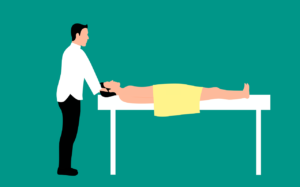
If you suffer from shoulder pain and find it difficult to get a good night’s sleep, you’re not alone. Luckily, there are sleeping positions that can help alleviate shoulder pain and provide you with the restful slumber you deserve. By making a few simple adjustments to your sleeping position, you can find relief and wake up feeling refreshed and pain-free. In this article, we will explore some of the best sleeping positions that are specifically designed to relieve shoulder pain, allowing you to finally get the comfortable and peaceful sleep you’ve been longing for.
The Best Sleeping Positions to Relieve Shoulder Pain

Introduction
If you’re dealing with shoulder pain, getting a good night’s sleep can be challenging. The way you position yourself while sleeping can have a significant impact on your shoulder pain. In this article, we will explore the best sleeping positions to relieve shoulder pain and provide you with helpful tips to ensure a restful night’s sleep.
1. Considerations for Choosing a Sleeping Position
Before we delve into specific sleeping positions, it’s essential to consider certain factors before making a choice. Firstly, you should consult with your healthcare professional to understand any underlying conditions that may affect your shoulder pain. Additionally, your personal preferences and comfort should guide your decision. It’s crucial to listen to your body and find the position that offers the most relief.
2. Sleeping on Your Back
Sleeping on your back is often considered one of the best positions to relieve shoulder pain. This position helps distribute weight evenly, reducing pressure on the shoulders.
2.1 Benefits of Sleeping on Your Back
Sleeping on your back aligns your spine properly, reducing the strain on your shoulders. It also promotes better breathing and helps prevent acid reflux. This position can provide relief for individuals experiencing shoulder pain caused by conditions like rotator cuff injuries or joint inflammation.
2.2 How to Sleep on Your Back to Relieve Shoulder Pain
To sleep comfortably on your back and relieve shoulder pain, follow these steps:
-
Use a supportive pillow: Choose a pillow that provides adequate support for your head and neck, keeping them aligned with your spine. Opt for a pillow that isn’t too high or too flat.
-
Place a towel under your neck: If you need additional support for your neck and shoulders, consider rolling a small towel and placing it under your neck. This can help alleviate pressure on your shoulder.
-
Keep your arms relaxed: Allow your arms to rest naturally by your sides, or place a pillow under each arm for added support and stability.
3. Sleeping on Your Side
Sleeping on your side is another sleeping position that can provide relief for shoulder pain. It allows your shoulder to remain in a neutral position, minimizing stress and tension.
3.1 Benefits of Sleeping on Your Side
Sleeping on your side can help alleviate shoulder pain by reducing pressure on the affected shoulder. It also promotes spine alignment, reduces snoring, and can be beneficial for individuals with conditions like sleep apnea or acid reflux.
3.2 How to Sleep on Your Side to Relieve Shoulder Pain
To optimize your side sleeping position for shoulder pain relief, follow these steps:
-
Use a supportive pillow: Choose a pillow that properly supports your head and neck, maintaining a neutral position. The pillow should fill the gap between your head and mattress, ensuring your spine is aligned.
-
Place a pillow between your knees: Putting a pillow between your knees helps align your hips and reduce strain on your lower back and shoulders.
-
Avoid sleeping on your shoulder: If you’re experiencing shoulder pain, try to avoid direct pressure on the affected shoulder. Consider hugging a pillow or using a body pillow for support.

4. Avoiding Sleeping on the Affected Shoulder
When experiencing shoulder pain, it’s crucial to avoid putting direct pressure on the affected shoulder while sleeping. This can exacerbate discomfort and prolong the healing process. Instead, try to distribute your weight evenly or provide support to the affected shoulder with pillows or cushions.
5. Sleeping with a Pillow for Support
Using a pillow for support can significantly enhance your sleeping position and alleviate shoulder pain. Here are two ways to utilize a pillow for support while sleeping.
5.1 Using a Pillow between Your Arms
Placing a pillow between your arms can help maintain your spine’s alignment while keeping your shoulders relaxed. This position can provide relief for individuals with shoulder pain caused by conditions like shoulder impingement syndrome or tendonitis.
5.2 Using a Pillow under Your Arm
If you find sleeping on your side more comfortable, consider placing a pillow under your arm. This pillow will help support your shoulder, reducing strain and pressure on the affected area. It’s especially beneficial for individuals recovering from shoulder surgery or dealing with an injury.

6. Other Tips for Relieving Shoulder Pain While Sleeping
In addition to choosing the right sleeping position and utilizing pillows for support, here are a few other tips to help relieve shoulder pain while sleeping:
6.1 Using a Body Pillow
A body pillow can be an excellent investment for those experiencing shoulder pain. It provides support for your entire body and helps distribute weight evenly, reducing strain on the shoulders and promoting proper alignment.
6.2 Adjusting Your Mattress and Pillow
Ensure your mattress and pillow are suitable for your body and sleeping preferences. A mattress that provides adequate support, such as a memory foam or medium-firm mattress, can help relieve pressure points and align the spine correctly. Similarly, choosing a pillow that suits your sleeping position and offers the necessary support is essential.
6.3 Applying Heat or Cold Therapy
Before bed, you can apply a heating pad or a cold pack to your shoulder for pain relief. Heat therapy can help relax muscles and improve blood flow, while cold therapy can reduce inflammation and numb the area. Experiment with both methods to determine which one provides the most relief for your shoulder pain.
7. Conclusion
Finding the best sleeping position to relieve shoulder pain is essential for a good night’s sleep and a speedy recovery. Whether you choose to sleep on your back or side, remember to use supportive pillows and avoid placing direct pressure on the affected shoulder. Additionally, consider incorporating other strategies like using a body pillow or applying heat or cold therapy for added relief. By prioritizing your comfort and making minor adjustments, you can wake up refreshed and ready to tackle the day without shoulder pain holding you back.







